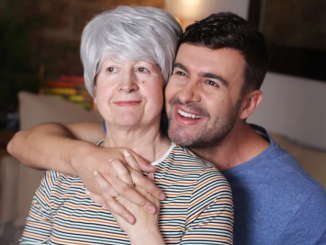Most of us react the same way when we see a bug in our house—either squish it immediately or grab something to toss it outside. But what if I told you there’s one insect you should actually leave alone if you spot it in your home?
Meet the house centipede (Scutigera coleoptrata). With its long, spindly legs and lightning-fast movements, it might look like something straight out of a horror movie, but this little creature is one of the best natural pest controllers you can have in your home.
So before you reach for a shoe, let’s take a closer look at why you might want to let the house centipede stay.
What Is a House Centipede?

The house centipede is a harmless yet incredibly effective predator that preys on many of the insects we actually don’t want inside our homes. These include:
- Spiders
- Cockroaches
- Termites
- Ants
- Bedbugs
- Silverfish
- Flies
Unlike most centipedes that prefer outdoor environments, house centipedes thrive indoors and tend to stick to damp, dark places like basements, bathrooms, and attics.
Now, I get it—these guys don’t exactly win any beauty contests. But trust me, once you understand how beneficial they are, you’ll think twice before killing one.
Why You Should Never Kill a House Centipede
1. They Are Natural Pest Exterminators
House centipedes are nature’s built-in pest control. Instead of using harmful chemicals or expensive exterminators, these little guys hunt down and eliminate unwanted pests for you.
Video : House Centipedes – What you need to know!
How do they do it? Their speed and venomous legs make them expert hunters. They don’t build webs or traps—they actively go after their prey, ensuring that other insects don’t stand a chance.
2. They Are Completely Harmless to Humans
Let’s clear up a common misconception—house centipedes are not dangerous to people.
Yes, they have venom, but it is only used to paralyze their prey. Their venom is too weak to affect humans, and they rarely bite. Even if they do, the worst you might feel is something similar to a mild bee sting.
That being said, house centipedes prefer to run away rather than confront humans. They don’t want anything to do with us; they just want to feast on the insects that invade our space.
3. They Keep Other Bugs in Check
Think of house centipedes as your personal insect bodyguards.
By keeping populations of cockroaches, termites, and other pests low, they actually help maintain balance inside your home. If you start seeing more house centipedes, it might actually be a sign that you already have a pest problem—and they’re just trying to help.
4. They Don’t Damage Your Home
Unlike termites or carpenter ants, house centipedes do not chew on wood, fabrics, or food. They have no interest in anything other than hunting insects. So unlike some other house pests, they’re not going to cause structural damage or ruin your belongings.
Where Do House Centipedes Hide?

If you’re wondering why you don’t see house centipedes often, it’s because they prefer to stay hidden in dark, humid areas. They typically hide in:
- Basements
- Bathrooms
- Under sinks
- Attics
- Closets
- Behind furniture
If you see one running across your floor, chances are it was just out hunting for food and not trying to invade your space.
How to Make Your Home More Centipede-Friendly (Without Letting Them Take Over)
Want to let house centipedes do their pest control job without feeling like you’re living in a bug-infested horror movie? Here’s how to coexist peacefully with these helpful critters:
1. Avoid Using Insect Sprays
Most commercial bug sprays will kill house centipedes along with other pests. If you’re serious about keeping them around for pest control, skip the sprays and opt for more natural solutions to deal with problem insects.
2. Reduce Moisture in Your Home
House centipedes love humid environments. If you have damp areas like basements or bathrooms, using a dehumidifier can help reduce their numbers without eliminating them completely.
Video : Just me holding a House Centipede
3. Seal Up Entry Points for Other Bugs
If you’re noticing a lot of centipedes, it could be a sign that other bugs are getting into your home too. Seal up cracks, fix leaky pipes, and eliminate other pests so your centipede population doesn’t get out of control.
4. Relocate Them If You Must
Not comfortable sharing your home with them? Instead of killing them, try catching them in a jar and relocating them outside. Just remember, without them, you might start seeing more of the insects they usually eat!
Final Thoughts: The Next Time You See One, Let It Live!
House centipedes might look creepy, but they’re actually one of the best insects you can have inside your home. They eliminate other pests, don’t bite unless provoked, and won’t damage your house.
So the next time you see one, resist the urge to squish it! Instead, think of it as your personal pest control agent, quietly working behind the scenes to keep your home bug-free.
What do you think? Would you let a house centipede stay in your home, or would you still get rid of it? Let us know in the comments!
Her photo wearing a bikini on the beach is being shared bu thousands and when the camera zooms out we understand why
What was supposed to be a day filled with fun and joy turned into a tragic incident for the grad-student at The University of Georgia, Aimee Copeland.
That day in 2012, she and her friends decided to go on a trip to a small lake, where they could zipline over the water. This sounded like a great idea which they all loved the moment they heard it.
Unfortunately, when it was Aimee’s turn to have some fun, the the cable snapped and she fell down a cliff. Sadly, she lost her leg that day.

Aimee was rushed to the hospital, and once there doctors had more horrific news. Aimme contracted a very serious flesh-eating bacteria which infected her wound. It was a matter of hours if she would survive or live.
The bacteria she had is known as Aeromonas hydrophila. This bacteria easily leads to a life-threatening condition known as necrotizing fasciitis, commonly referred to as a flesh-eating disease.
It required 11 surgeries for her life to be saved, but she lost both her hands and legs which needed to be amputated.

However, as brave as she has been, this young woman didn’t let the tragedy stay on her way of living her life to the best of her abilities.
Four years after the incident, Aimee shared a photo of herself at the beach, wearing a bikini and putting a huge smile on her face.
Many found inspiration in the photo and it was soon shared on the social media thousands of times with many saying that Aimee is a true inspiration.

She’s proud of herself and of everything she managed to overcome, and what’s most, she’s proud of her body and the way she looks after the ordeal she had gone through.
“It has taken me a long time to become comfortable with and accept my new body. We are ALL made with imperfections and there is so much beauty in our flaws. The scars and skin grafting build character! It’s not about what you have — what you do with what you have is what really counts,” she wrote in the caption.
Today, Aimee is an advocate for amputee and disability rights, and she continues to inspire others through her public speaking engagements and social media posts. What’s most, she’s pursuing a PhD in psychology at the University of West Georgia.
She is the perfect example that nothing can take our dreams away, not even a tragedy like the one she suffered.
If you want to learn more about this gorgeous young lady check out the video below.




Leave a Reply